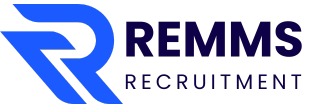
If you have ever applied for a job online and never heard back, chances are your resume didn’t make it past an Applicant Tracking System (ATS). These systems are designed to filter resumes before a hiring manager even sees them. That’s why creating an ATS-friendly resume is so important. I know it can feel like you’re writing for a robot rather than a person, but once you understand how ATS works, you can easily adjust your resume to stand out.
Why ATS-Friendly Resumes Matter
When you submit your resume, it doesn’t usually go straight to a recruiter. Instead, an ATS scans it for specific keywords, experience, and formatting. If the system doesn’t find what it’s looking for, your resume may get rejected even if you’re the perfect fit. That’s frustrating, right? I’ve seen great candidates miss opportunities just because their resumes weren’t optimized.
The good news is that you can fix this. Once you know what ATS looks for, you can write a resume that passes through the system and reaches human eyes. It’s not about tricking the software. It’s about speaking its language while still appealing to the recruiter who will read it later.
Start With the Right Keywords
An ATS is like a search engine for recruiters. It scans resumes for keywords that match the job description. If those keywords aren’t there, you won’t show up in their results. So, how do you fix that?
I always tell people to start by reading the job listing carefully. Notice the exact words the company uses for skills, tools, and job titles. If they want someone with experience in “content strategy” and “SEO,” make sure those words are on your resume. Don’t just say “online marketing” if they don’t mention that phrase. It’s about mirroring their language naturally.
Also, include both acronyms and full terms. For example, write “Search Engine Optimization (SEO)” instead of just “SEO.” This way, no matter which one the ATS is scanning for, you’ll hit a match.
Keep Formatting Clean and Simple
You might have seen fancy resume templates with graphics, icons, and multiple columns. They look great to humans but terrible to ATS. Most of these systems can’t read content inside text boxes or columns. Some can’t even read certain fonts or symbols.
When I create an ATS-friendly resume, I stick to a simple structure: contact info, summary, experience, skills, and education. No tables. No images. Just clean text. Fonts like Arial or Calibri work well because they’re easy to read and ATS-friendly.
Another tip? Avoid headers and footers. Many ATS tools skip those sections entirely, which means if your phone number or email is in the header, the recruiter might never see it.
Tailor Every Application
I know it’s tempting to send the same resume to every job, but that approach doesn’t work with ATS. Every job has unique keywords and requirements. When I apply, I always adjust my resume to match the job posting. This doesn’t mean rewriting everything. It just means reordering or rephrasing certain skills and experiences to match what the employer is asking for.
For example, if one job emphasizes “team leadership” and another focuses on “project coordination,” I highlight those specific terms in my summary and work experience. These small changes can boost your chances of being noticed.
Use a Skills Section
Adding a dedicated “Skills” section is a smart move for any ATS-friendly resume. It’s where you can include important keywords without forcing them into your work experience unnaturally. I like to create a list of hard skills things like “data analysis,” “Photoshop,” or “JavaScript.” These terms are easy for ATS software to scan and match against job postings.
Soft skills, like “communication” or “teamwork,” matter too, but most ATS tools focus more on technical or measurable abilities. You can include soft skills in your summary or job descriptions instead.
Structure Your Resume for Humans and ATS
The tricky part is writing for both robots and people. I’ve learned that a resume needs to pass the ATS filter but still look good to a recruiter. The best way to do this is by keeping the language simple, clear, and results-focused.
Instead of saying, “Responsible for managing projects,” I would say, “Managed 10+ projects, reducing delivery time by 20%.” This is keyword-rich and shows measurable impact. Recruiters love that. So do ATS systems because they pick up on clear, direct terms.
Don’t Forget Your Cover Letter
While the resume is your ticket past ATS, the cover letter is where you can connect with the recruiter on a personal level. I often recommend checking cover letter examples for inspiration, but never copy them word for word. Make yours authentic and aligned with the role.
When you send both a well-optimized resume and a strong cover letter, you stand out from the hundreds of other applicants who only rely on generic templates.
How Recruitment Agencies Help
Sometimes, even with an ATS-friendly resume, it’s hard to get noticed. That’s where the best recruitment agency or top staffing firms can help. They have direct relationships with hiring managers and know exactly what companies are looking for.
I’ve seen best staffing agencies and the best manpower agency provide candidates with detailed feedback to improve their resumes. Some even offer professional resume optimization as part of their staffing solution. This not only helps your resume pass ATS filters but also positions you as a stronger candidate overall.
Testing Your Resume
One of my favorite tricks is using online tools to test resumes against ATS. Websites like Jobscan can show you how well your resume matches a job description. It’s like seeing your resume through the recruiter’s lens. I usually aim for at least an 80% match score before applying. This step might feel extra, but it’s worth it.
If you don’t want to use tools, you can simply copy the job description into your resume draft and see if you naturally included most of the important keywords. If not, add them where they fit.
Why Short, Clear Sentences Work
When I started writing resumes, I used long sentences and fancy words, thinking it would impress recruiters. I was wrong. Shorter, clear sentences work better for both ATS and humans. They’re easier to scan, and ATS systems pick up keywords faster. For example, instead of saying, “I was responsible for the implementation and supervision of complex projects,” I now write, “Implemented and supervised complex projects.” See the difference? It’s straightforward and powerful.
Final Thoughts
An ATS-friendly resume is no longer optional in today’s job market. It’s a must if you want to be seen. By focusing on keywords, clean formatting, and clear structure, you can make your resume stand out. Combine this with a tailored cover letter, and you’re already ahead of most applicants.
I always tell job seekers this: Write your resume like you’re having a conversation. Show what you’ve done in simple terms. Use numbers when you can. And never forget that while ATS might be your first hurdle, the real goal is to connect with the person reading your resume at the end of the process.
If all of this feels overwhelming, don’t hesitate to work with a professional recruiter or a top staffing firm. The best recruitment agency knows how to create resumes that both pass ATS filters and catch a recruiter’s eye. With the right approach, your resume won’t just make it through the system it will get you the interview you deserve.
